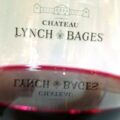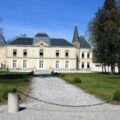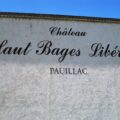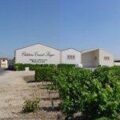Starting in 2005, Chateau Lynch Bages has been working extensively in their vineyards to protect their vegetal genetic material. The chateau adopted “selection massale” for replanting. “Massal selection” differs from clonal selection in the following ways: a clone is a vine propagated from one single vine, a mother vine, and each plant is identical in DNA and uniform in personality. During the 60s and 70s that became the rule in Bordeaux. Today, most of the plantations are still done with this technique, using nursery-supplied clones. As a result, we believe in the long run, a vineyard loses its identity. To avoid that situation, according to Jean-Michel Cazes, we decided to act before it was too late.
Massal selection involves choosing a number of outstanding vines from the vineyard and then propagating new vines from that budwood. Massal selection is accomplished through field selections by taking carefully chosen cuttings from old vines. In order to perpetuate the original diversity, we only consider parcels planted more than 50 years ago.
We believe the mix we have in the older vines is the result of decades of observations, adaptations and optimization on the actual terroir of the estate. We also think genetic diversity results in an efficient safety-oriented strategy, leading to less exposure to a catastrophic disease or adverse condition that could gravely affect a cloned vineyard. To help ensure the correct result, cuttings from only the very top vines are propagated. This is a long term and highly time consuming process. However, it’s well worth the effort in our opinion.
After several years of work, we put together a “bank” of thousands carefully selected Petit Verdot and Cabernet Sauvignon genetically different vines. These vines reflect the long history and diversity of the Lynch-Bages vineyards. We are in the process of field selection of the merlot vines. This will take another year or two. We started with Petit Verdot before merlot because the Petit Verdot is small. Although we pay attention to select the best plants, vigor of the vines is less uniform and we actually anticipate slightly lower global yields. The bank is now large enough to satisfy our needs for future plantings of these two varietals.
We have now at our disposal a wide “pool” of Petit Verdot and Cabernet vines we can use for future reproduction and planting. We plan to complete the selection of Merlot within 2 or 3 years. Then the actual replanting of the entire vineyard will take many years of planning and organization. It’s a long term commitment. We are in no hurry and believe it’s worth it.
Our first Petit Verdot parcels planted with this technique will be picked during the 2010 harvest. Our cabernet sauvignon plantations of the last 2 years were all made from the bank and will start producing with the 2011 vintage. We believe this is an important move towards preservation of the identity of our vineyard as well as enhancement the quality of the Bordeaux wine we produce.
Jean-Michel Cazes





